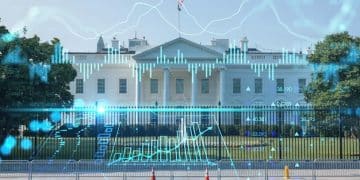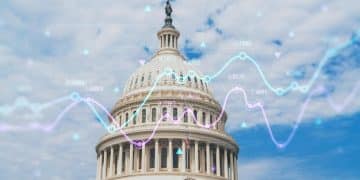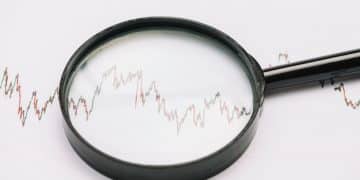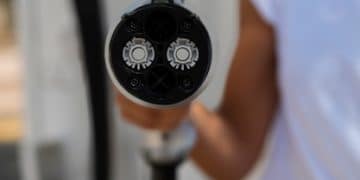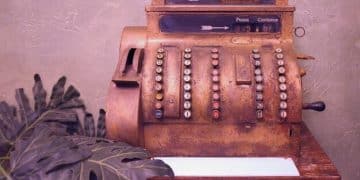Analyzing Claims of a 0.75% Fed Rate Hike in December 2024: Fact Check

This fact check examines the likelihood of the Federal Reserve raising interest rates by 0.75% in December 2024, considering current economic indicators and expert opinions on monetary policy.
Is a significant 0.75% interest rate hike by the Federal Reserve in December 2024 a realistic possibility? Let’s analyze the veracity of claims that the Federal Reserve will raise interest rates by 0.75% in December 2024, examining the economic data and expert predictions surrounding this potential move.
Understanding the Federal Reserve’s Monetary Policy
The Federal Reserve, often referred to as the Fed, plays a crucial role in managing the US economy through its monetary policy. One of the primary tools at the Fed’s disposal is adjusting interest rates. These adjustments can have significant impacts on borrowing costs, inflation, and overall economic growth.
The Fed’s Mandate
The Federal Reserve operates under a dual mandate, which means it has two primary goals: to maintain price stability and to promote maximum employment. Price stability generally refers to keeping inflation at a manageable level, typically around 2%. Maximum employment means ensuring that as many people as possible have jobs.
How Interest Rates Impact the Economy
When the Fed raises interest rates, it becomes more expensive for businesses and consumers to borrow money. This can lead to reduced spending and investment, which can help to cool down an overheating economy and curb inflation. Conversely, when the Fed lowers interest rates, borrowing becomes cheaper, which can stimulate economic activity.
- Higher interest rates can reduce inflation by decreasing demand.
- Lower interest rates can stimulate economic growth by encouraging borrowing and spending.
- The Fed carefully monitors economic indicators to make informed decisions about interest rate adjustments.
Understanding the Fed’s mandate and how interest rates impact the economy is crucial for evaluating the likelihood of future rate hikes. The Fed’s decisions are data-driven, influenced by various economic indicators and global economic conditions.
Current Economic Conditions and Inflation
To assess the possibility of a 0.75% interest rate hike in December 2024, it’s essential to examine the current economic conditions and, in particular, the state of inflation. Inflation has been a major concern in recent years, prompting the Fed to take aggressive action.
Inflation Trends
Inflation is measured by the Consumer Price Index (CPI), which tracks the average change in prices for a basket of goods and services. Significant increases in the CPI indicate rising inflation. The Fed closely monitors these trends to determine whether its monetary policy is effectively curbing inflation.
Key Economic Indicators
Besides inflation, several other economic indicators influence the Fed’s decisions. These include the unemployment rate, GDP growth, retail sales, and manufacturing activity. Strong economic growth and low unemployment can sometimes lead to higher inflation, prompting the Fed to raise interest rates.
- Unemployment rate: A low unemployment rate can indicate a tight labor market and potential wage inflation.
- GDP growth: Strong GDP growth can lead to increased demand and higher prices.
- Retail sales: Rising retail sales suggest strong consumer spending, which can fuel inflation.
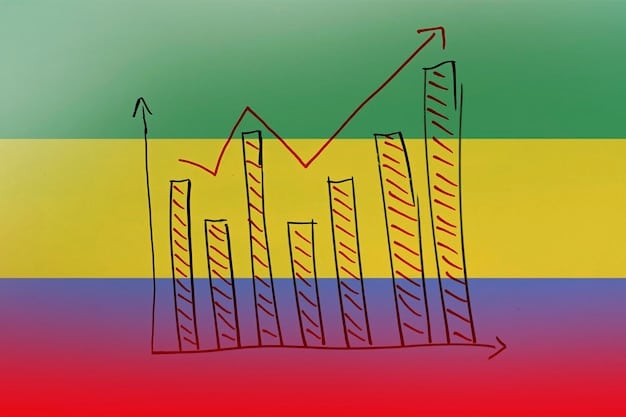
Analyzing these economic indicators provides a comprehensive view of the economy’s health and helps to predict the Fed’s potential actions. If inflation remains stubbornly high and the economy continues to grow, the likelihood of further interest rate hikes increases.
Analyzing Statements from Federal Reserve Officials
The statements and communications from Federal Reserve officials offer valuable insights into the Fed’s thinking and potential future actions. These statements often provide clues about the Fed’s concerns and priorities, helping to gauge the likelihood of specific policy decisions.
Speeches and Testimonies
Federal Reserve officials, including the Fed Chair and other members of the Federal Open Market Committee (FOMC), frequently give speeches and testimonies before Congress. These events provide opportunities for them to share their views on the economy and monetary policy.
Minutes from FOMC Meetings
The FOMC is the body within the Federal Reserve that sets monetary policy. The minutes from FOMC meetings are released several weeks after the meetings take place and provide detailed accounts of the discussions and debates among committee members.
Carefully analyzing these statements and minutes can reveal the Fed’s concerns about inflation, economic growth, and financial stability. If Fed officials express strong concerns about persistent inflation, it could signal a greater willingness to raise interest rates.
Expert Opinions and Economic Forecasts
In addition to analyzing the Fed’s own communications, it’s crucial to consider the opinions of economists and financial analysts. These experts often provide forecasts and analyses that can help to assess the likelihood of a 0.75% interest rate hike in December 2024.
Economic Forecasts
Many economic institutions and financial firms publish regular economic forecasts, which include projections for GDP growth, inflation, and interest rates. These forecasts are based on sophisticated economic models and analysis of current trends.
Analyst Commentary
Financial analysts often provide commentary on the Fed’s policy decisions and their potential impact on the economy. These analysts may offer different perspectives on the likelihood of future interest rate hikes, based on their own analysis and expertise.

- Review economic forecasts from reputable institutions like the International Monetary Fund (IMF) and the World Bank.
- Follow commentary from leading economists and financial analysts.
- Consider a range of opinions to get a balanced view of the economic outlook.
By considering a range of expert opinions and economic forecasts, you can gain a more comprehensive understanding of the factors influencing the Fed’s decisions and the likelihood of a 0.75% interest rate hike.
Historical Context of Fed Rate Hikes
Examining past instances of significant interest rate hikes by the Federal Reserve provides valuable context for assessing the possibility of a 0.75% increase in December 2024. Understanding the circumstances surrounding previous rate hikes can offer insights into the Fed’s decision-making process.
Past Rate Hike Cycles
The Federal Reserve has gone through several rate hike cycles in the past, each driven by different economic conditions. Analyzing these cycles can reveal patterns and common triggers for rate increases.
Economic Conditions During Past Hikes
In previous rate hike cycles, the Fed typically raised interest rates in response to rising inflation, strong economic growth, and tight labor markets. Understanding these economic conditions can help to identify potential parallels with the current situation.
By examining the historical context of Fed rate hikes, you can gain a better understanding of the factors that typically lead the Fed to take such actions. This can help you to assess whether the current economic conditions warrant a significant rate increase.
Alternative Scenarios and Potential Outcomes
While analyzing the possibility of a 0.75% interest rate hike, it’s important to consider alternative scenarios and potential outcomes. The Fed’s decisions are not made in a vacuum, and various factors could influence its actions.
Scenario 1: Inflation Remains High
If inflation remains stubbornly high despite previous rate hikes, the Fed may feel compelled to take more aggressive action, including a 0.75% rate increase. This scenario would likely involve continued strong economic growth and a tight labor market.
Scenario 2: Economic Slowdown
If the economy begins to slow down significantly, the Fed may decide to pause or even reverse its rate hike cycle. In this scenario, inflation may start to moderate on its own, reducing the need for further rate increases.
- Consider the potential impact of geopolitical events on the global economy.
- Monitor financial market conditions for signs of instability.
- Stay informed about changes in economic forecasts and expert opinions.
By considering these alternative scenarios and potential outcomes, you can be better prepared for different possible paths of the Federal Reserve’s monetary policy.
| Key Aspect | Brief Description |
|---|---|
| 📈 Inflation Trends | Monitoring CPI for signs of persistent high inflation. |
| 🗣️ Fed Statements | Analyzing speeches and FOMC minutes for policy clues. |
| 전문가 Expert Opinions | Considering economists’ forecasts and analyses. |
| 📜 Historical Context | Reviewing past rate hikes and economic conditions. |
Frequently Asked Questions (FAQ)
▼
The Federal Reserve operates under a dual mandate: to maintain price stability (control inflation) and to promote maximum employment (ensure as many people have jobs as possible).
▼
Interest rate hikes make borrowing more expensive, which can reduce spending and investment. This can help to cool down an overheating economy and curb inflation, but may also slow economic growth.
▼
The Fed monitors various economic indicators, including the Consumer Price Index (CPI), unemployment rate, GDP growth, retail sales, and manufacturing activity, to inform its policy decisions.
▼
You can stay informed by following statements from Federal Reserve officials, reviewing minutes from FOMC meetings, and consulting economic forecasts from reputable institutions and financial analysts.
▼
Alternative scenarios include inflation remaining high, which could lead to more aggressive rate hikes, or an economic slowdown, which could cause the Fed to pause or reverse its rate hike cycle.
Conclusion
In conclusion, determining the likelihood of a 0.75% interest rate hike by the Federal Reserve in December 2024 requires a comprehensive analysis of current economic conditions, inflation trends, statements from Fed officials, expert opinions, and historical context. While the possibility remains, various factors and alternative scenarios could influence the Fed’s final decision.

